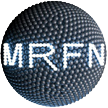Our ChronosBH (ISS) Time-Correlated Single Photon Counting (TCSPC) spectrofluorometer that is capable of measuring fluorescence lifetimes down to 250ps in a 300-950nm spectral range with either a monochromator or discrete filters. A supercontinuum fiber laser provides 5 ps continuously tunable excitation pulses from 425 to 800nm and a complementary set of LED and laser diodes cover the UV (280, 300, 345 & 405nm).


